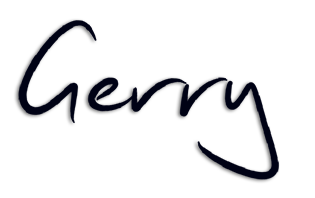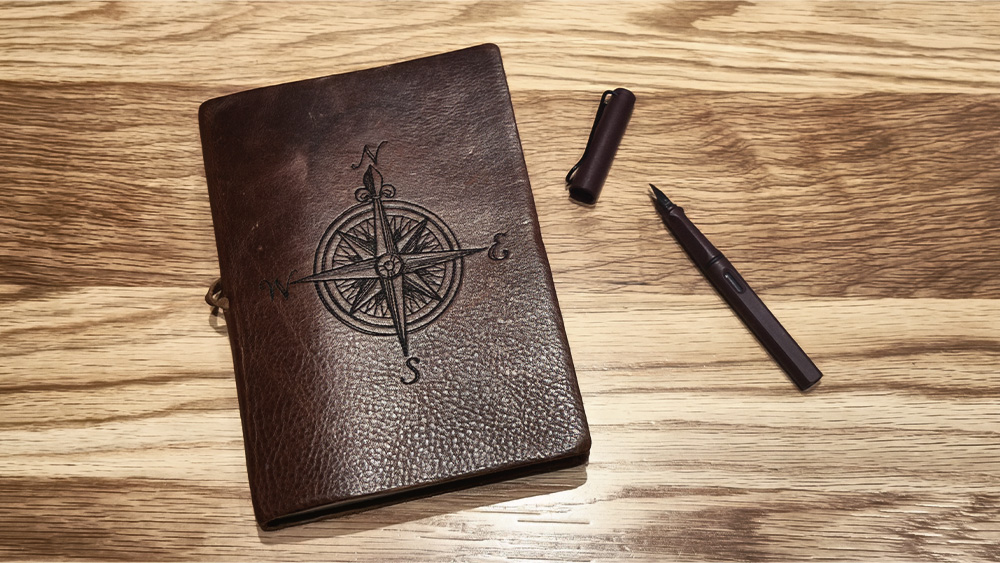Have you ever noticed how thoughts feel different once they leave your head and land on paper? There’s something transformative about seeing your internal dialogue take physical form – suddenly more manageable, less overwhelming, and open to examination.
This is the quiet power of journaling, a practice I’ve seen transform countless clients’ mental landscapes. As I often tell them, “Journaling helps you deal with internal things in the external world.” It’s that simple and that profound.
The -5 to +5 Spectrum: Moving Beyond Survival to Thriving
Traditional psychology has focused primarily on moving people from suffering (-5) to functional (0). But positive psychology asks a different question: what takes us from functional (0) to flourishing (+5)?
Journaling uniquely addresses both journeys. It can help process trauma and difficult emotions while simultaneously building resilience, clarity, and vision for the future. This dual capability makes it one of the most versatile tools in mental performance optimization.
The Science Behind the Practice
The research on journaling’s effectiveness is compelling:
- Emotional Processing: Studies show expressive writing reduces intrusive thoughts about negative events and helps the brain process emotional experiences more completely
- Cognitive Restructuring: Regular journaling strengthens neural pathways between the emotional and rational brain centers, improving emotional regulation
- Stress Reduction: Just 15-20 minutes of journaling can decrease cortisol levels and reduce physiological stress markers
- Goal Achievement: People who write down their goals are 42% more likely to achieve them than those who don’t
But beyond these measurable benefits lies something more profound—journaling creates a space where you become both the speaker and the listener of your own experience. This dialogue with yourself builds self-awareness, the cornerstone of all personal growth.
For Processing the Past: The Letter to Your Younger Self
This powerful technique creates distance between your current self and past experiences, allowing you to offer perspective and compassion to the person you once were.
The Practice:
- Choose a specific age or period that feels significant
- Address your younger self directly (“Dear 15-year-old me…”)
- Make peace with the fact that you’re not that person anymore
- Acknowledge what they were going through without judgment
- Share wisdom you’ve gained since then
- Offer the compassion and understanding they may have needed
This practice isn’t about rewriting history, but about reprocessing it with your evolved perspective. Many clients report profound emotional releases from this exercise, particularly around long-held shame or regret.
For Creating the Future: Letter from Your Future Self
This technique leverages the brain’s difficulty distinguishing between vividly imagined scenarios and reality, creating a powerful visioning tool for goal setting.
The Practice:
- Choose a timeframe (1, 5, or 10 years from now)
- Write as if you’re your future self looking back on the intervening years
- Detail what you’ve accomplished, challenges you’ve overcome, and who you’ve become
- Include specific milestones and how it feels to have achieved them
- Offer guidance to your present self about what matters most
This creates a neural blueprint your brain begins working toward unconsciously. The specificity matters—vague aspirations (“I want to be successful”) don’t engage the brain’s planning centers like concrete visions (“I’m writing to you from my office overlooking the city, where I now lead a team of 12 talented people…”).
For Daily Resilience: The Gratitude-Challenge Balance
This technique addresses a common pitfall in positive psychology practices – toxic positivity. It acknowledges challenges while maintaining perspective on what’s working.
The Practice:
- Divide your page into two columns
- In the first column, note three specific things you’re grateful for today
- In the second column, write one challenge you’re facing
- Under the challenge, write one small step you can take to address it
- Conclude by writing how your gratitudes might help you face your challenge
This balanced approach prevents both negative rumination and unrealistic positivity. It builds the mental muscle of seeing difficulties within the larger context of life’s positive aspects.
For Performance Enhancement: The After-Action Review
Borrowed from military and business contexts, this structured reflection accelerates learning and improves future performance.
The Practice:
- Describe a recent performance situation (presentation, difficult conversation, etc.)
- Answer four specific questions:
- What was intended to happen?
- What actually happened?
- What caused the difference?
- What will I do differently next time?
- Be factual rather than judgmental
- Focus on controllable factors
This technique short-circuits both self-criticism and self-congratulation in favor of objective analysis. The focus on specific, actionable insights builds a performance improvement mindset that transfers across domains.
Implementation: The Missing Link
Many people start journaling with enthusiasm only to abandon it within weeks. The research on habit formation suggests several strategies to maintain consistency:
- Reduce friction: Keep your journal visible and accessible
- Attach to existing habits: Journal immediately after an established routine
- Start small: Begin with 5 minutes rather than aiming for lengthy sessions
- Focus on consistency over quality: A mediocre daily entry outperforms a brilliant monthly one
- Create accountability: Share insights (not necessarily the writing itself) with someone else
The Multiplier Effect
What makes journaling uniquely powerful is its ability to enhance other mental performance practices. Meditation becomes more focused when preceded by journaling. Goal-setting becomes more aligned with values when explored through writing. Decision-making improves when options are analyzed on paper.
This multiplier effect explains why journaling remains a cornerstone practice among high performers across domains from athletics to business to creative pursuits.
Practice What I Preach
Journaling isn’t just something I recommend to clients. It’s a foundational practice in my own life. I believe so deeply in its power that I invested in a leather-bound journal with a compass embossed on the cover as a daily reminder that this practice helps me navigate my inner landscape.
I also use a fountain pen for my journaling sessions. There’s something about the deliberate nature of writing with a fountain pen and the way the ink flows onto the page, requiring just a bit more presence and intention than a ballpoint that elevates the experience from mere note-taking to a creative act.
These might seem like small details, but they transform journaling from another task on my to-do list into a ritual I look forward to. When I open that leather cover and uncap my pen, my brain immediately shifts into a different mode, more reflective, more honest, more exploratory.
This tangible relationship with the practice has made consistency easier. The physical objects serve as anchors for the habit, visual reminders of my commitment to mental clarity and continued growth.
Not Just “Fluffy Stuff”
I recognize some men, particularly, might dismiss journaling as “fluffy bullshit” or some kind of new age indulgence. I get it, I do. I’ve been there. But the people who resist these practices don’t avoid them; they simply forfeit access to their power.
Think about it this way. Special Forces operators, CEOs, professional athletes, and astronauts all use journaling as part of their performance toolkit. These aren’t communities known for embracing ineffective methods or wasting time on sentimentality.
The resistance usually comes from a misunderstanding. Journaling isn’t about recording your feelings like a teenage diary, it’s a strategic tool for mental clarity, decision-making, and performance enhancement. It’s about taking the scattered thoughts that consume mental bandwidth and transforming them into structured, actionable insights.
In my coaching practice, I’ve seen the most dramatic transformations in clients who were initially the most skeptical. The ones who approached journaling as a practical experiment rather than a belief system, and were genuinely surprised by the concrete improvements in their focus, decision-making, and emotional regulation.
Questions to Consider
As you contemplate incorporating or deepening your journaling practice:
- What internal experiences might benefit from being externalized in writing?
- Which timeframe needs more attention in your life—processing the past or creating the future?
- What’s one specific area of performance you’d like to enhance through reflective writing?
- What’s the smallest, most sustainable journaling habit you could commit to tomorrow?
Journaling isn’t just writing. It’s a conversation with yourself across time. It’s where you can safely explore who you’ve been, clearly see who you are, and intentionally create who you’re becoming.
I’d love to hear about your experiences with journaling.
What techniques have you found most valuable? What barriers have you encountered in maintaining the practice? Share your thoughts in the comments below.
Stay safe.
And don’t forget to be awesome.







